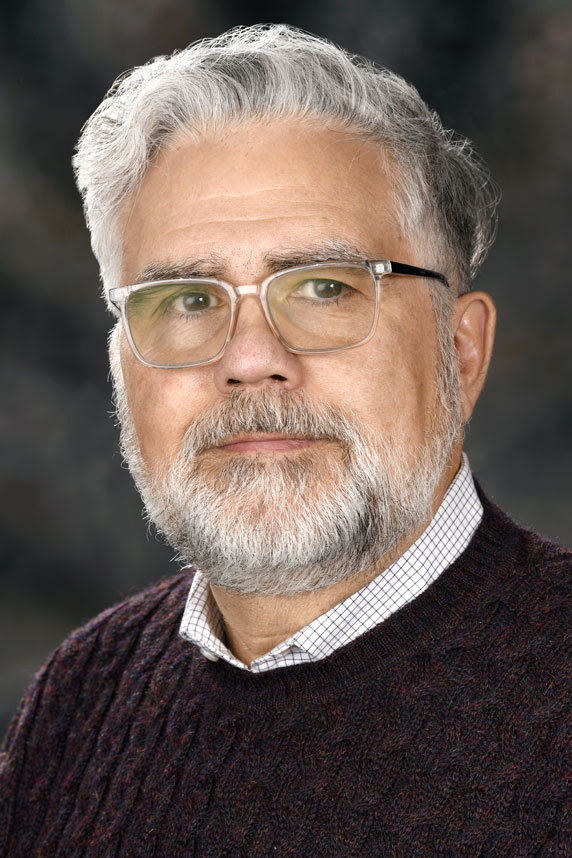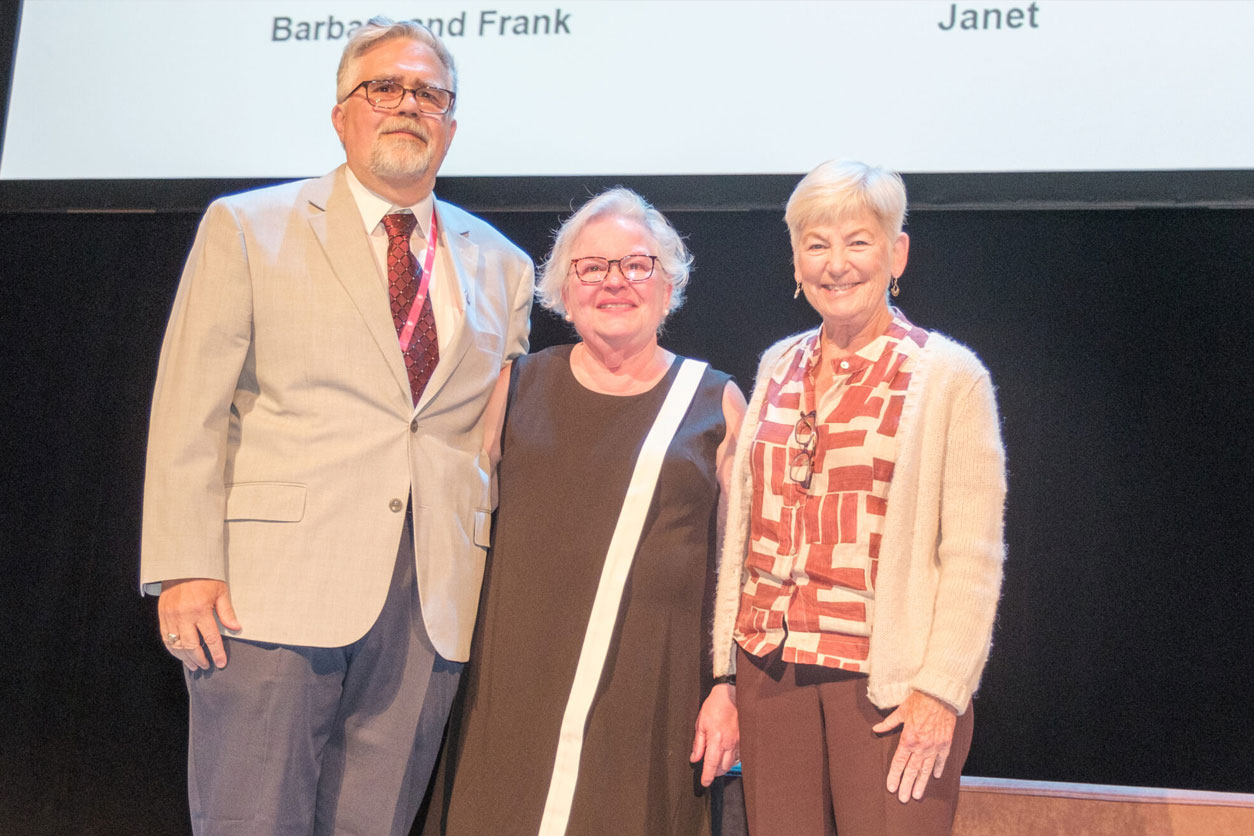In recognition of three decades of research and scholarly achievements, Francesco (Franco) DeMayo, Ph.D., received the 2024 Carl G. Hartman Award from the Society for the Study of Reproduction. This is the society’s highest award.
“Being a recipient of the prestigious Carl G. Hartman Award is a wonderful way to celebrate Dr. DeMayo’s many contributions to the field,” said NIEHS Scientific Director Darryl Zeldin, M.D.

DeMayo’s work has focused on developing methods and models to better understand human reproduction. He is chief of the NIEHS Reproductive and Developmental Biology Laboratory and leads the Pregnancy and Female Reproduction Group. He also holds a secondary appointment in the NIEHS Immunity, Inflammation, and Disease Laboratory.
His signature achievement is the development of genetically altered mouse models that mimic human uterine biology. The PR-Cre model enabled the manipulation of genes in the uterus and opened a new frontier for investigations into how genes and hormonal receptors for progesterone regulate uterine function.
“He was the first to conditionally turn off genes in the mouse uterus, and he was also the first to map out communication between different cell layers in the uterus to identify pathways that control embryo implantation,” said Zeldin. “The pathways identified in mice shed new light on the pathways governing human fertility.”
They also served as the basis for new studies on infertility, endometrial cancer, endometriosis, fibroids, preterm birth, and postmenopause.
Ongoing discoveries
The ovarian hormone progesterone, acting through the Progesterone Receptor (PRG), governs all aspects of female reproduction and protects the female reproductive tract from the adverse effects of environmental estrogens. Using genetically engineered mice and primary human endometrial samples, the researchers have defined the cell-to-cell interactions governing embryo implantation in early pregnancy.
The progesterone receptor consists of two isoforms, PRG-A and PGR-B. The researchers used genetically engineered mice to alter the ratio of progesterone receptor isoforms PRG-A and PGR-B in the uterine muscles. They showed that PGR-A promotes muscle contraction and PGR-B prevents such contraction and identified the biological pathways influenced by both. The discovery has implications for the treatment of preterm labor.
“Ten percent of all pregnancies result in preterm birth, which can have serious negative health consequences,” noted DeMayo. Preterm birth is the primary cause of neonatal morbidity and mortality worldwide, and babies born prematurely have a greater risk for blindness, cerebral palsy, and lung and breathing problems.
DeMayo continues to break new ground in reproductive biology. Recently, his group identified a unique gene signature in mouse ovarian tumors. The discovery provides insight into the potential role of the ovarian steroid hormones and what drives the development of reproductive cancers in mice and humans.

Finding a research home at NIEHS
“We know that reproduction goes hand in hand with the environment,” said DeMayo.
He hopes to one day better determine how endocrine disruptors in the environment impact the ability of the reproductive tract to initiate and maintain pregnancy.
This is one reason DeMayo was excited to join NIEHS in 2015. He said the collaborative culture of the agency, proximity to environmental scientists, and opportunities to mentor talented trainees from bachelor’s through postdoctoral levels all combine to energize his work.
Previously, DeMayo was a professor and Cullen Duncan McAshan Endowed Chair at the Baylor College of Medicine, where he also completed postdoctoral studies. He earned his Ph.D. in physiology from Michigan State University.
“The Hartman Award was a lifelong goal for me,” said DeMayo, who celebrated the honor with his wife at the society’s awards ceremony. He received the award on their 41st wedding anniversary.
(Elizabeth Witherspoon, Ph.D., is a contract writer for the NIEHS Office of Communications and Public Liaison.)









